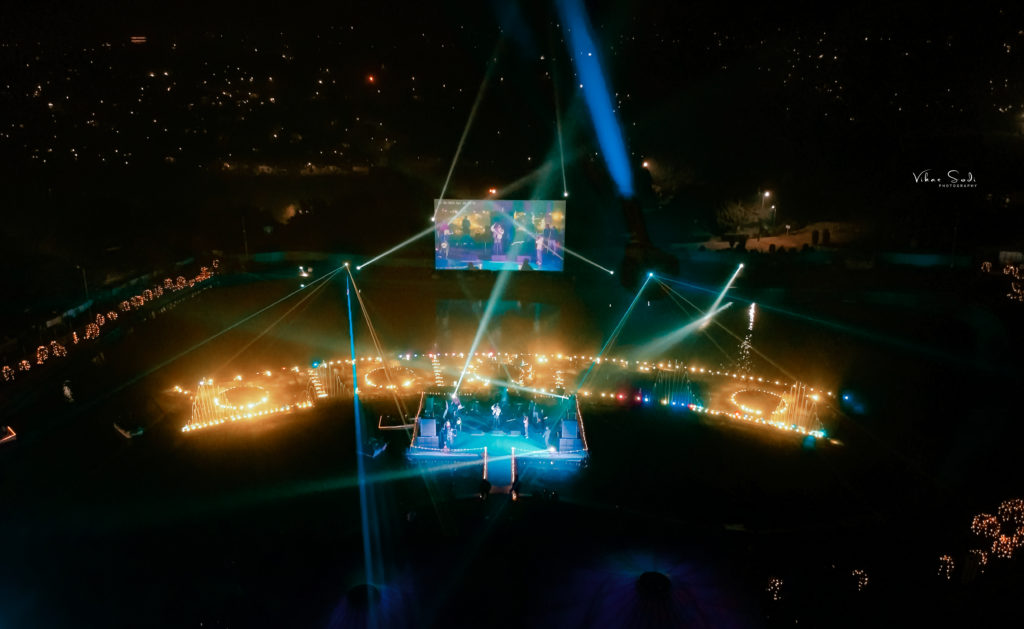
Jhiri Mela, a three-day festivity, is a blend of spirituality, culture and social unity. It is organised every year at the village, Jhiri which is located about 20 km from Jammu, off the Jammu-Akhnoor highway. Every year during the Kartik Purnima (late autumn full moon) falling during the last week of October or early November, an annual mela (festival) is held here. Lakhs of devotees throng the village to commemorate the martyrdom of Baba Jitoo, a farmer who gave up his life in protest against the oppressive demands of the zamindar about 500 years ago.
Jhiri Mela stands as a testament to the spirit of righteousness and sacrifice embodied by Baba Jitoo. The fair continues to draw thousands of visitors each year, making it one of the most awaited events in the region. The mela symbolises honesty, hard work, courage, selflessness, innocence, humility and above all truthfulness.
Jhiri Mela also known as Aghar Jitoo Mela, witnesses great hustle and bustle during the three-day festival as pilgrims, families and various groups belonging to diverse communities and hailing from different parts of the country assemble to pay obeisance at the Baba Jitoo temple to seek Baba Jitto’s and Bua Kouri’s blessings. People from every nook and corner visit the spot during the mela. Especially the members of the local and outside communities who worship Baba Jitoo as Kuldevta (family deity) come here to pray and seek blessings on important occasions like marriage, the birth of a child, mundane (tonsuring ceremony) or simply to thank or entreat the Baba for his continuing protection and blessings.
During the festival, there is regular recitation of folk songs by Jogis and ‘Gardis’ in the form of Baba devotional ballads known as ‘Karkan’ at the main shrine. Many entertaining cultural shows are staged. While ‘dangal’ the Indian style wrestling matches in which wrestlers from far and wide participate, draw a large crowd of sports enthusiasts.
On the first day of the Mela, a Jatra is held at the birthplace of Baba Jitoo which continues for the whole night with bhajans of Baba Jitoo.
On the second day, Shobha Yatra is taken out from his birthplace, in which a large number of pilgrims/devotees participate.
On the last day, wrestling is organised in which locals and wrestlers from other parts of the country participate.
Baba Jitto: An Epitome of Justice and Devotion
The journey of legendary Baba Jitto is like many other folk heroes who begin their lives as ordinary persons but are transformed into someone extraordinary by performing significant life events in their lives.
Baba Jitoo, originally named Jit Mal, was a farmer born in a Brahmin family. Baba Jitoo’s father, Roopchand, was a farmer by profession. Baba Jitoo was an honest and truthful farmer of village Aghar Jitoo which is located in the foothills of Trikuta hills, the abode of Mata Vaishno Devi in the union territory of Jammu and Kashmir. Baba Jitoo was a Brahmin and a great devotee of Mata Vaishno Devi.
In the folklore, Roopchand is depicted as a supportive and loving father. Baba Jitoo grew up under his guidance, learning the values of fairness, hard work and dedication. The tale of Baba Jitoo’s defiance against injustice and his eventual martyrdom is imparted by his father, Roopchand. Baba Jitoo’s mother’s name was Mato Bai. She is also an important figure in Baba Jitoo’s life. Mato Bai is believed to have been a devoted and righteous woman.
He left his village with his daughter Bua Kouri because of the hostility of his aunt (Jojan) and went to his friend Iso Megh who lived in the village Panjaur (district Samba). There he requested a feudal landlord, Mehta Bir Singh of the village Amb gharota for a piece of land. The feudal landlord gave Baba Jitoo a piece of barren and infertile land after signing an agreement that he would give him a-fourth of his produce. Baba Jitoo worked very hard and turned the barren and infertile land into fertile land and it gave a bumper crop. When the feudal landlord came to know about the fact that the land yielded bumper crops, he came along with his men to this field and took away three-fourth of the crop. Baba Jitoo pleaded with the landlord to adhere to the terms of the agreement but he forcibly took away the lion’s share of the crop. Incensed by the injustice, helpless Jitmal, while uttering his last words ‘sukki kanak nain khayaan mehtyaaa, dinna ratt ralayi’ (don’t saviour raw wheat, oh Mehta, let my blood be soaked in it), stabbed himself on the heap of the crop, leaving all grains drenched red with his blood. It is said that after that a fierce rainstorm raged in the area and the blood-strained grains were washed away. And all those people, even the birds, who had partaken in those grains later suffered from various afflictions, including diseases, untimely deaths, misfortunes and Jartars. To seek pardon from the wrath of the holy spirit, they not only asked for his forgiveness by worshipping him as a ‘Kul devta’- a family deity, also making it mandatory for their future generations to venerate Baba Jitoo and pay annual homage to him.

Bua Kouri
The new common language will be more simple and regular than the existing European languages. It will be as simple as Occidental; in fact, it will be Occidental. To an English person, it will seem like simplified English, as a skeptical Cambridge friend of mine told me what Occidental is. The European languages are members of the same family. Their separate existence is a myth. For science, music, sport, etc, Europe uses the same vocabulary. The languages only differ in their grammar, their pronunciation and their most common words.
Everyone realizes why a new common language would be desirable: one could refuse to pay expensive translators. To achieve this, it would be necessary to have uniform grammar, pronunciation and more common words.
So to pay reverence to Baba Jitto and Bua Kouri, Jhiri Mela is organised every year. People from far and flung areas throng the place to seek blessings. Many devotees bring sugarcane as an offering to the shrine of Baba Jitoo as part of their prayers for good health, happiness and success. Long green stalks are placed at the shrine as a token of devotion and faith.
Sugarcane is often seen as a symbol of prosperity, sweetness and blessings. The presence of sugarcane in the mela could be symbolic of the region’s agrarian heritage and a reflection of the deep connection between agriculture and spirituality. The offering of sugarcane might also have deeper spiritual meanings. Its sweetness is seen as a metaphor for the sweet blessings of Baba Jitoo that devotees hope to receive.
Apart from that, people also offer dolls to Bua Kouri. Dolls are believed to be symbolic of the innocence and purity associated with the persona Bua Kouri. It is said that people, especially women, bring these dolls to the mela to express their thanks for health and prosperity or to seek blessings for their children.
Perfect Complement to Meditation
Quiz Form
Energy Healing & Chakra Balancing Quiz





